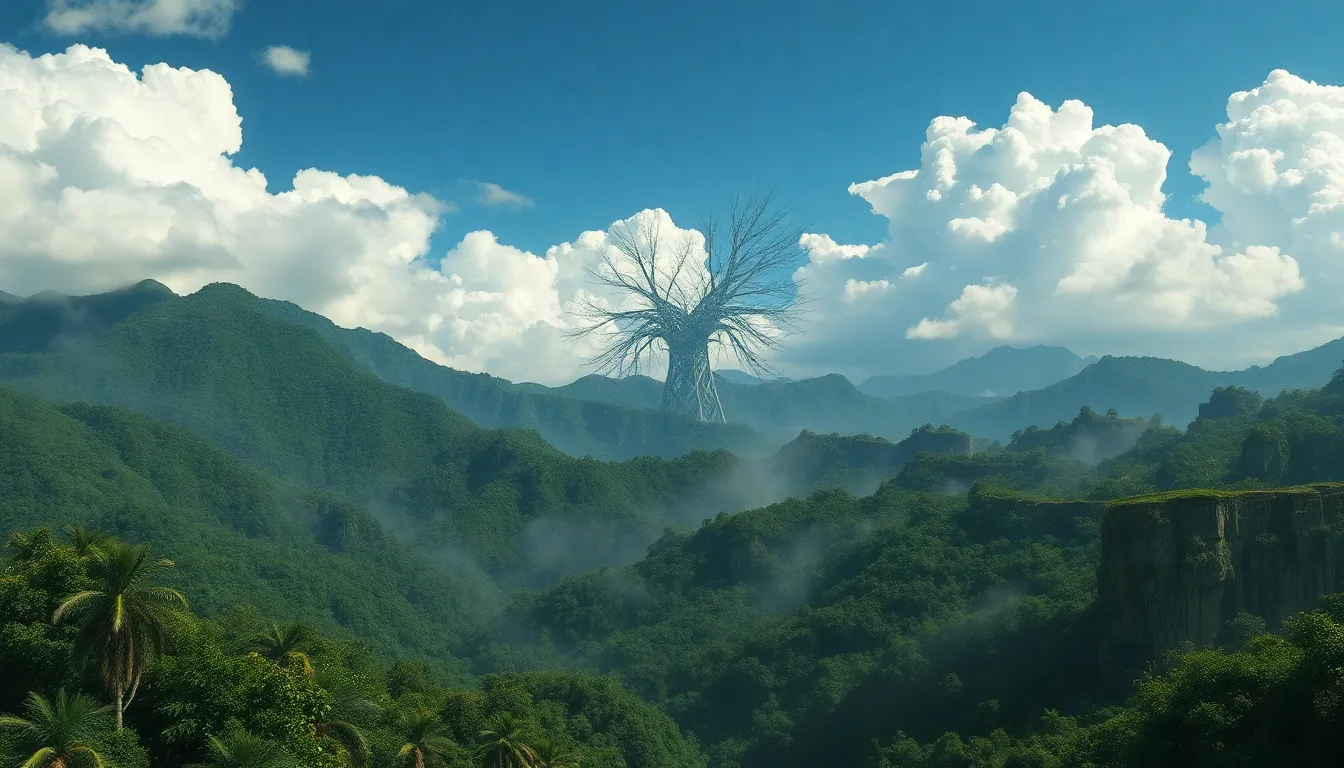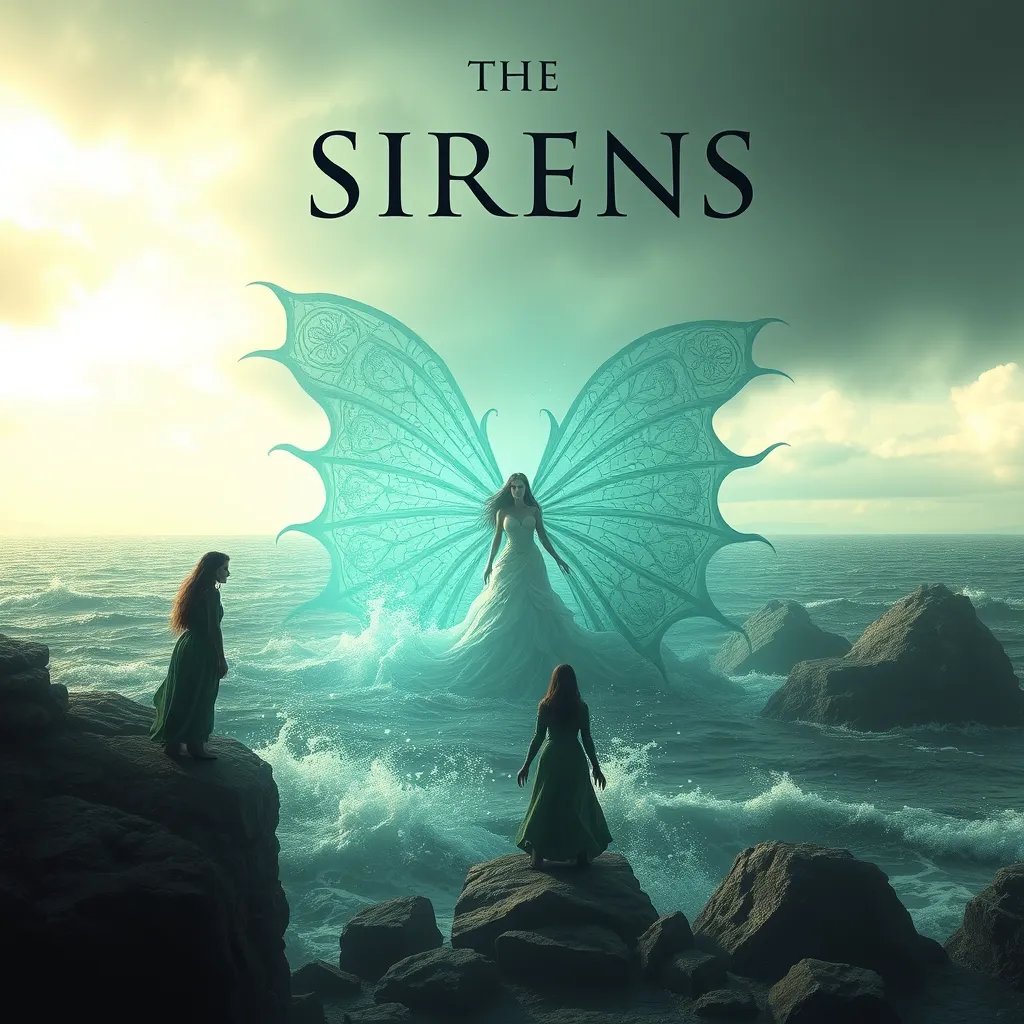The Lore of the Land: Exploring the Spirits of the Haitian Loa
I. Introduction to Haitian Vodou
Haitian Vodou is a rich and complex spiritual practice that plays a vital role in the cultural identity of Haiti. It is often misunderstood and misrepresented in various contexts, yet it remains a profound aspect of daily life for many Haitians. Vodou encompasses a wide array of beliefs, rituals, and traditions that connect practitioners to their ancestors, the spirits, and the natural world.
Central to the Vodou belief system are the Loa, or spirits, who serve as intermediaries between humans and Bondye, the Supreme Being. The Loa embody different aspects of life, nature, and the universe, making them integral to the spiritual, social, and cultural fabric of Haitian society. This article aims to explore the significance of the Loa, their characteristics, and their enduring impact on the lives of the Haitian people.
II. Understanding the Loa
The term “Loa” refers to the spirits or divine entities that play a crucial role in Vodou. They are believed to possess unique qualities and characteristics, each representing various aspects of life, nature, and human experience. Unlike deities in other religions, Loa are not considered omnipotent; rather, they are seen as powerful beings who provide guidance, protection, and assistance to their followers.
In Vodou, the Loa act as intermediaries between humans and Bondye. They are invoked during rituals and ceremonies to communicate with the divine, seeking help, healing, or guidance. The relationship between practitioners and the Loa is symbiotic, with offerings and rituals serving to honor the spirits in exchange for their blessings.
III. Major Loa and Their Characteristics
A. Overview of prominent Loa
Several Loa are particularly prominent in Haitian Vodou, each with distinct attributes and roles:
- Papa Legba: The Gatekeeper
- Erzulie: The Goddess of Love and Beauty
- Baron Samedi: The Guardian of the Dead
Papa Legba is often depicted as an old man with a cane, serving as the guardian of the crossroads and the gatekeeper to the spirit world. He is the first spirit invoked in any Vodou ritual, as he opens the door to communication with other Loa.
Erzulie is a multifaceted spirit associated with love, beauty, and femininity. She is often depicted as a beautiful woman adorned with flowers, representing love in its many forms, including romantic, maternal, and platonic love.
Baron Samedi is one of the most recognizable Loa, known as the spirit of the dead. He is often portrayed as a flamboyant figure dressed in a top hat and sunglasses. Baron Samedi oversees funerals and ensures that the deceased transition to the afterlife.
B. Attributes, symbols, and associated rituals of each Loa
Each Loa has unique attributes, symbols, and rituals associated with them:
- Papa Legba: Symbols include keys and crossroads. Offerings may include rum, tobacco, and bread.
- Erzulie: Symbols include hearts and roses. Offerings often consist of sweets, flowers, and perfume.
- Baron Samedi: Symbols include skulls and gravestones. Offerings may include black coffee, cigars, and sometimes a glass of rum.
IV. The Connection between Loa and Nature
A. Representation of natural elements in Loa
The Loa are deeply connected to nature, embodying various natural elements such as rivers, mountains, and forests. This connection highlights the importance of the environment in Vodou spirituality, as each Loa reflects different aspects of the natural world.
B. The role of the land and environment in Vodou spirituality
In Haiti, the land itself is sacred. Vodou practitioners often engage with the environment through rituals that honor the spirits of nature. This relationship fosters a sense of stewardship over the land, emphasizing the need to respect and protect natural resources.
C. Sacred sites and natural shrines in Haiti
Haiti is home to numerous sacred sites and natural shrines that are integral to Vodou practices. These places, often found in mountains or near water, serve as locations for rituals and offerings to the Loa, reinforcing the connection between spirituality and the environment.
V. The Role of Rituals and Offerings
A. Importance of rituals in honoring the Loa
Rituals are essential in Vodou, serving as a means to communicate with the Loa and seek their guidance or assistance. These rituals can be elaborate ceremonies involving music, dance, and offerings, creating a communal experience that strengthens social bonds.
B. Common offerings and their meanings
Offerings to the Loa are an integral part of Vodou rituals. Common offerings include:
- Food: Prepared meals that the spirits enjoy.
- Drink: Alcohol, often rum, is a popular offering.
- Flowers: Fresh flowers symbolize beauty and love.
C. The significance of ceremonies in community life
Vodou ceremonies often serve as communal gatherings, bringing together families and communities to celebrate, mourn, or seek help. These events reinforce social ties and cultural identity, making Vodou an essential aspect of community life in Haiti.
VI. The Influence of Loa on Daily Life
A. How the beliefs in Loa shape social and family structures
The beliefs in Loa significantly influence social and family structures in Haitian society. Families often have a specific Loa to whom they are devoted, shaping their traditions and practices. This devotion fosters a sense of belonging and continuity across generations.
B. The impact of Loa on health, fortune, and protection
Many Haitians turn to the Loa for assistance with health, fortune, and protection. Rituals and offerings are common practices to seek healing, luck in endeavors, and safeguarding against misfortune.
C. The integration of Loa into cultural expressions (art, music, dance)
The influence of the Loa extends into various cultural expressions, including art, music, and dance. Vodou symbols and themes are prevalent in Haitian art, while traditional music and dance often reflect the rhythms and stories of the Loa, celebrating their presence in everyday life.
VII. Misconceptions and Cultural Appropriation
A. Common myths about Vodou and its practices
Vodou is often surrounded by misconceptions and myths, such as the idea that it is solely a religion of black magic or that it promotes violence. Such stereotypes fail to capture the true essence of Vodou as a spiritual practice focused on community, healing, and reverence for the Loa.
B. The impact of media portrayals on public perception
Media portrayals of Vodou frequently perpetuate negative stereotypes, leading to misunderstandings and fear. These portrayals overlook the rich traditions and the cultural significance of Vodou in Haitian society.
C. The importance of respectful understanding and representation
Respectful understanding and representation of Vodou are crucial in combating stereotypes and promoting cultural appreciation. Engaging with the culture authentically encourages a deeper understanding of its history and practices.
VIII. Conclusion: The Enduring Legacy of the Loa
A. The relevance of Loa in contemporary Haitian society
The Loa continue to hold significant relevance in contemporary Haitian society. They are seen as guiding forces in both individual lives and the community as a whole, embodying the hopes and aspirations of the people.
B. The role of Loa in preserving cultural identity
In a world that often seeks to homogenize cultures, the Vodou tradition and the worship of the Loa play a vital role in preserving Haitian cultural identity. They serve as a reminder of the resilience and richness of Haitian heritage.
C. Final thoughts on the significance of understanding the lore of the land
Understanding the lore of the land and the spirits of the Loa is essential not only for appreciating Haitian culture but also for fostering respect and dialogue among diverse cultural traditions. The Loa are more than mere spirits; they are a testament to the enduring legacy




